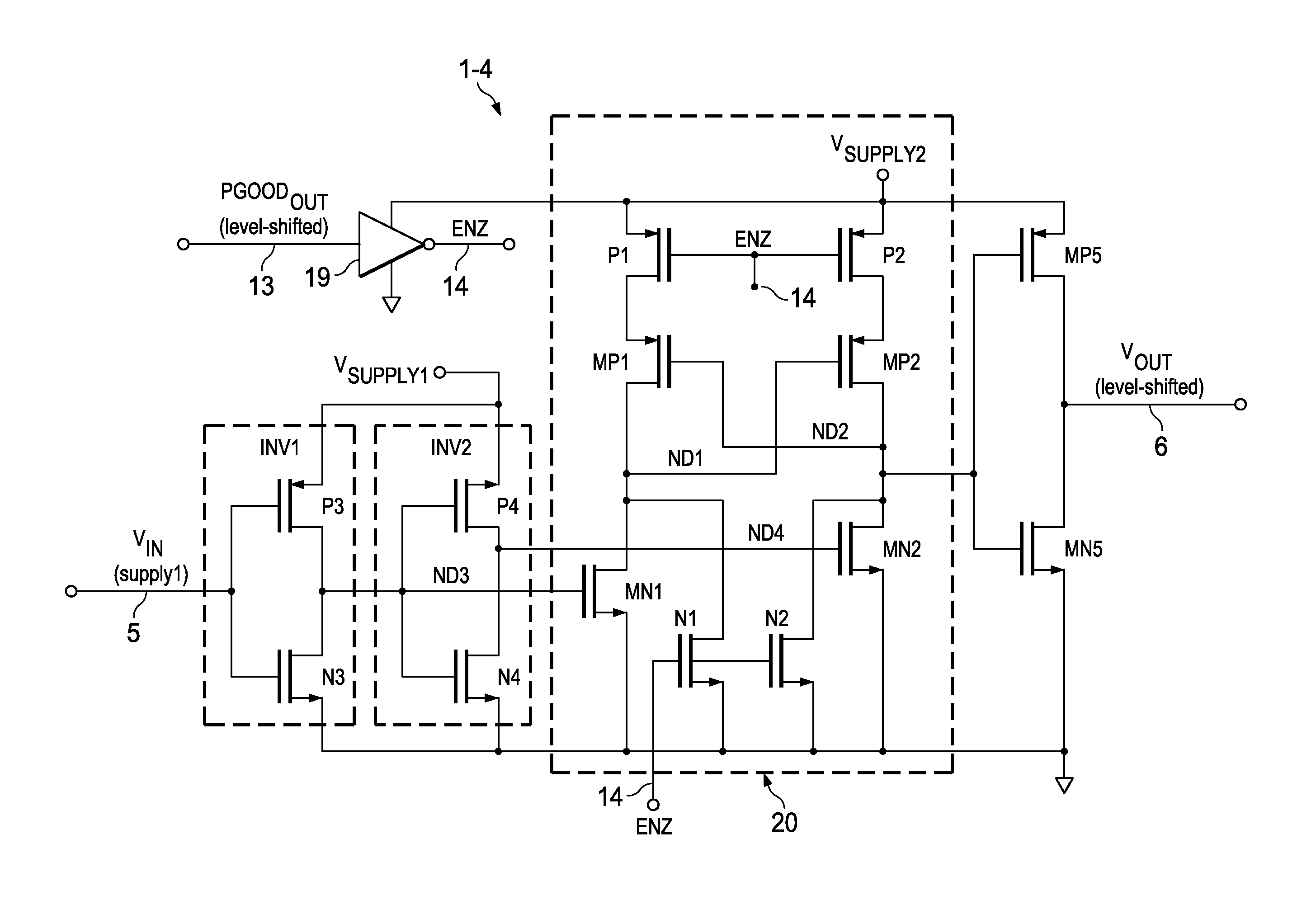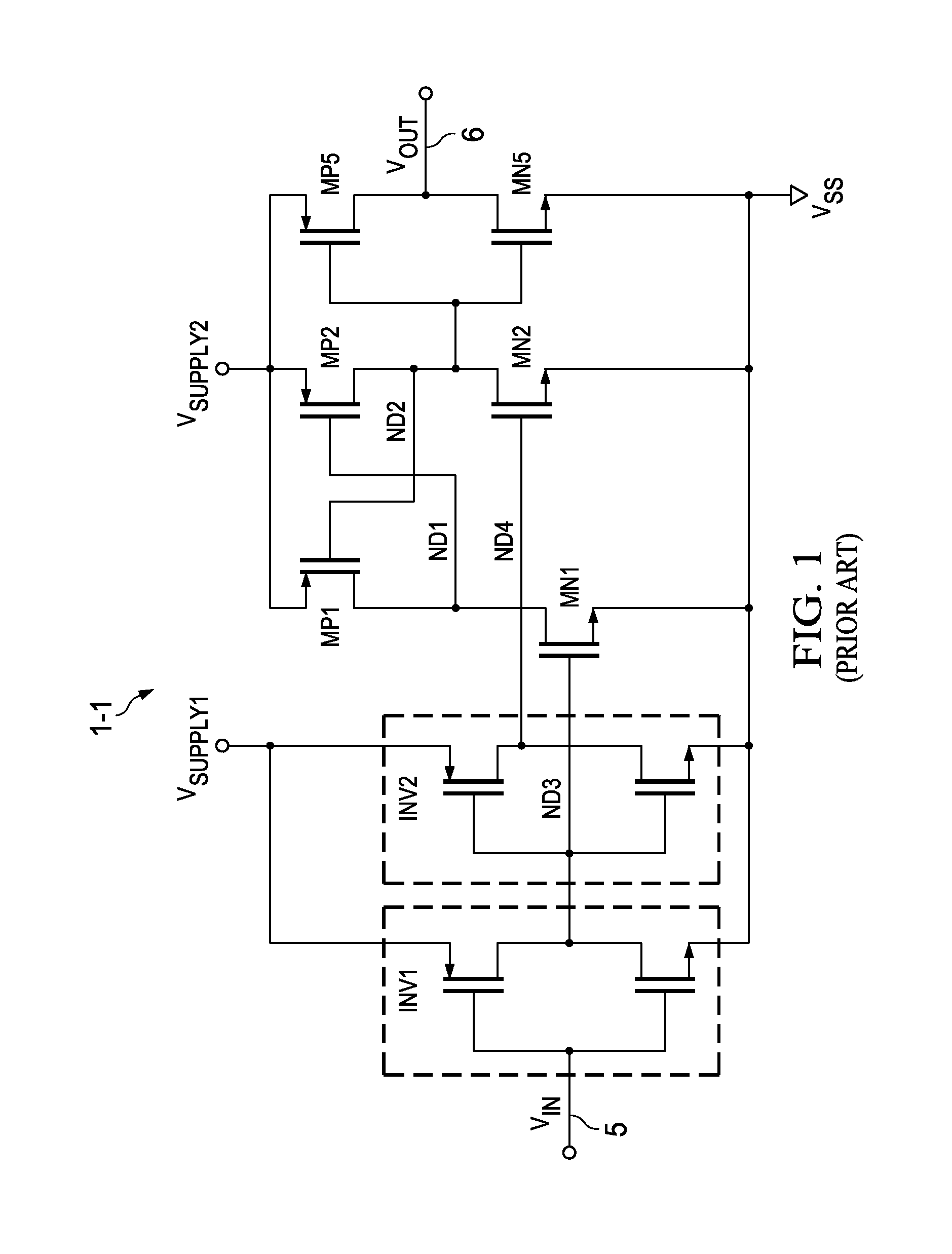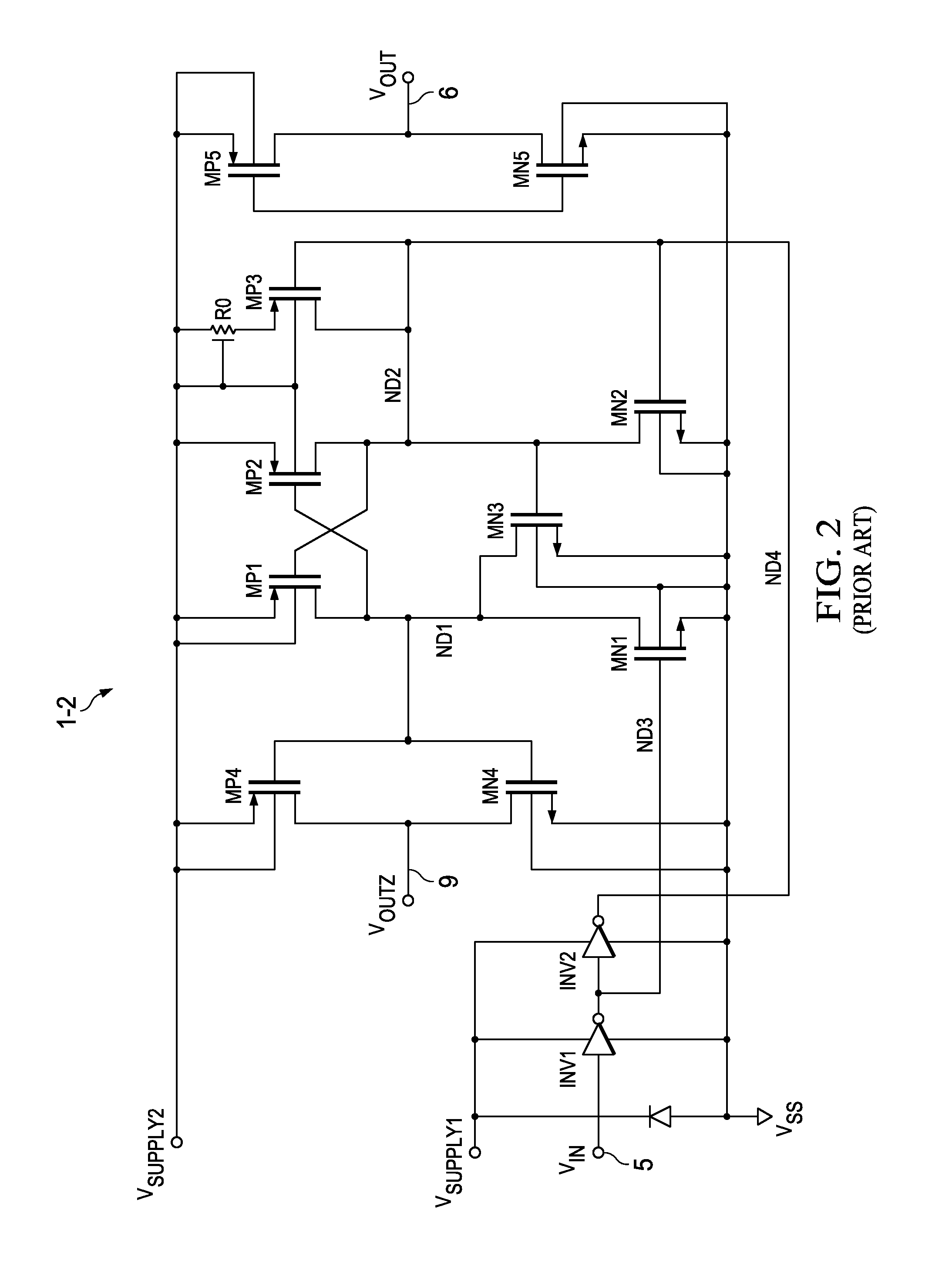Supply-state-enabled level shifter interface circuit and method
a level shifter and interface circuit technology, applied in logic circuit coupling/interface arrangement, pulse generator, pulse technique, etc., can solve the problem of resistive degeneration, voltage of node conductor, and create a shoot-through current leakage condition through transistor mnb
- Summary
- Abstract
- Description
- Claims
- Application Information
AI Technical Summary
Benefits of technology
Problems solved by technology
Method used
Image
Examples
Embodiment Construction
[0034]Referring to FIG. 3, POR (Power On Reset) enable circuit 1-3 receives an input enable signal PGOODIN, which is referenced to a power supply voltage VSUPPLY1. PGOODIN is coupled by conductor 11 to the gate electrodes of a CMOS inverter including a P-channel transistor P7 and a N-channel transistor N7. The source of transistor P7 is connected to VSUPPLY1, and its drain is connected by conductor 12 to the drain of transistor N7, the source of which is connected to ground. PGOODIN also is coupled to the gate electrodes of another CMOS inverter including P-channel transistor P9 and a N-channel transistor N9. The source of transistor P9 is connected to VSUPPLY1, and its drain is connected to the drain of a N-channel intrinsic threshold voltage transistor NA4 having its source connected by a node ND3A to the drain of transistor N9, the source of which is connected to ground. Conductor 12 is also connected to the gate electrode of another inverter including a P-channel transistor P8 a...
PUM
 Login to View More
Login to View More Abstract
Description
Claims
Application Information
 Login to View More
Login to View More - R&D
- Intellectual Property
- Life Sciences
- Materials
- Tech Scout
- Unparalleled Data Quality
- Higher Quality Content
- 60% Fewer Hallucinations
Browse by: Latest US Patents, China's latest patents, Technical Efficacy Thesaurus, Application Domain, Technology Topic, Popular Technical Reports.
© 2025 PatSnap. All rights reserved.Legal|Privacy policy|Modern Slavery Act Transparency Statement|Sitemap|About US| Contact US: help@patsnap.com



